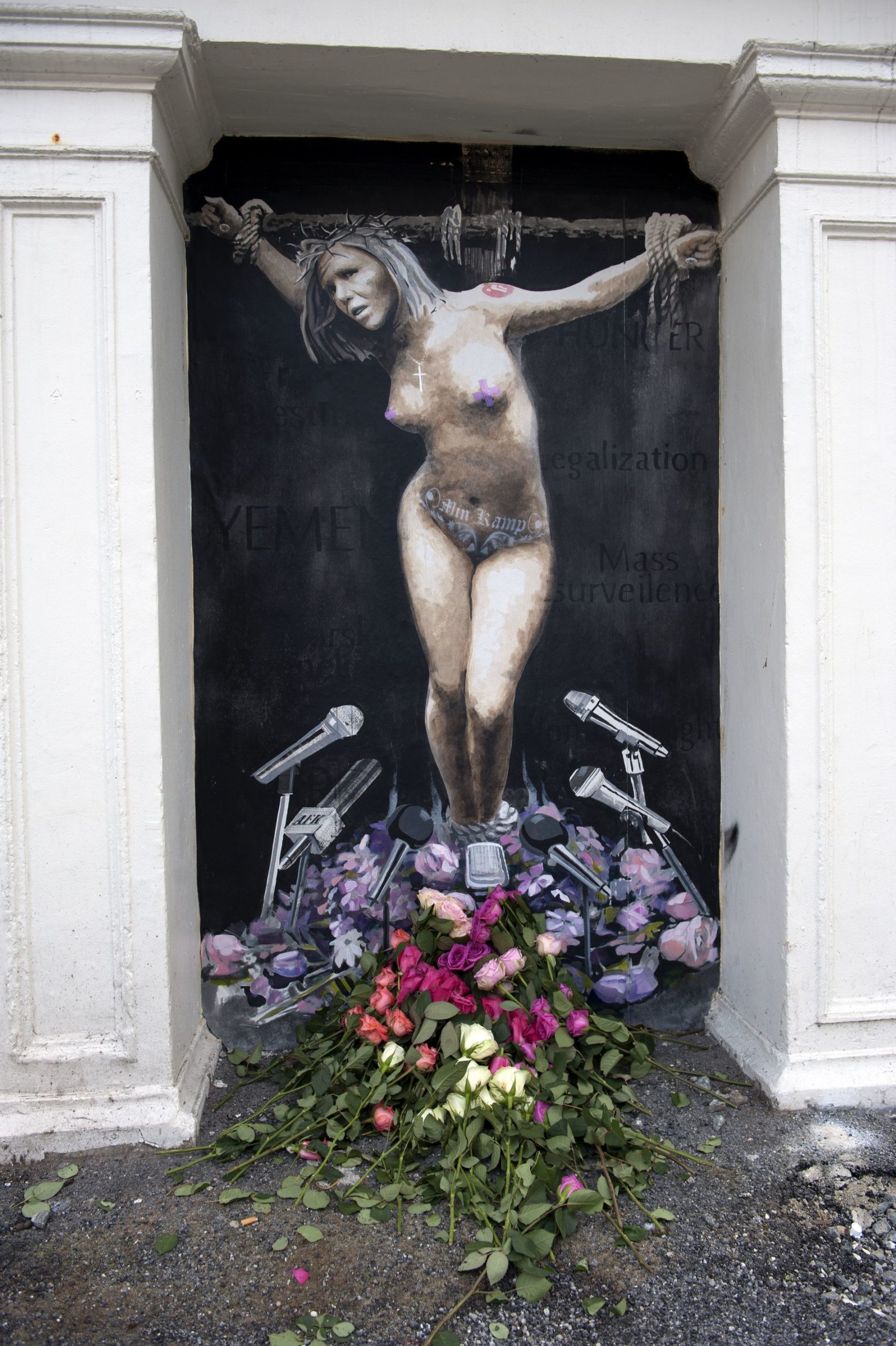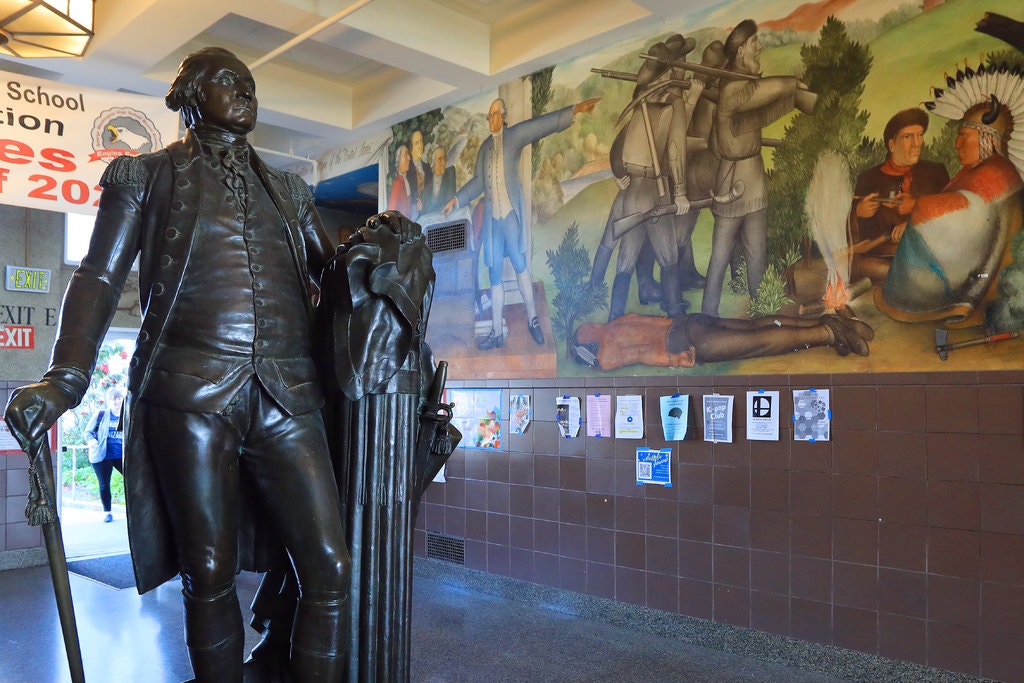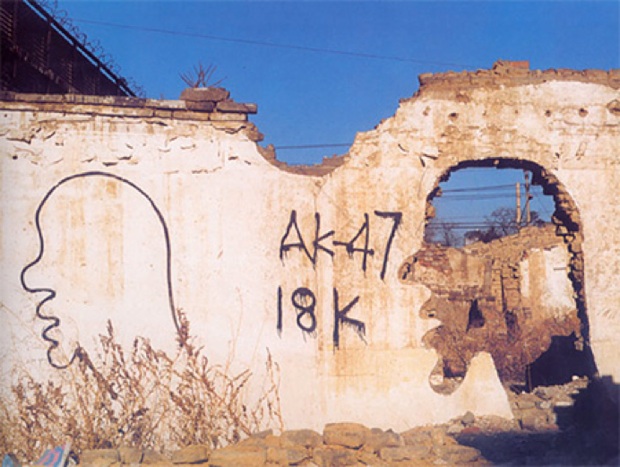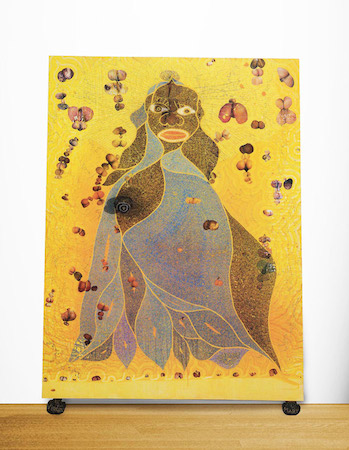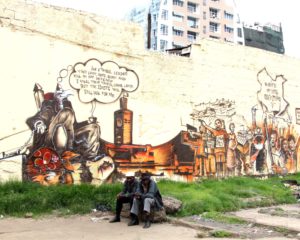
Since gaining independence from the United Kingdom in the 1960s to the present day, Kenya has consistently been plagued with corruption in their government. According to the Corruption Perceptions Index, Kenya ranks 123rd out of 180 countries in terms of having an “honest public sector.” Bribes, nepotism, and unlawful business practices are commonplace in Kenya to get normal bureaucratic tasks accomplished. To combat rampant corruption, artists are taking to the streets to voice their concerns through their artwork.
Although many artists want to express themselves freely, speaking out against corruption in Kenya has always been a difficult task. In the 1970s, Kenyan writer Ngugi Wa Thiong’o wrote a play titled Ngaahlika Ndeenda which criticized Kenya’s post-independence economic system and class structure. Just after a month of running, the play was banned and Ngugi was imprisoned for over a year in Kenya without charge or chance of appeal. Because of these tight restrictions on speech, many Kenyans felt suffocated in the public space as they were not allowed to voice their opinions freely about their government. Despite the large danger, Boniface “Bankslave” Mwangi and other anonymous graffiti artists are leading the charge to take back their freedoms in the public space.
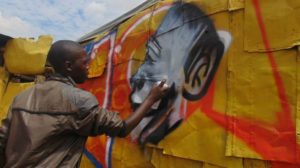
Mwangi believes that art which criticizes the government belongs in public spaces. In Kenya, 47% of people walk to wherever they are going, whether that is the store or their work. If the public space is restricted, then it is harmful to the community it is a part of. Instead, youth are usually seen as perpetrators of criminal activities in the streets and communities are more isolated from one another. Mwangi gets the young people involved in their graffiti to breathe new life into the public space. In Korogocho after Mwangi and his peers created their murals, musicians, artists, and citizens filled the area with a positive atmosphere and music that would not be possible otherwise.
Not only is their reasoning for painting their murals important, but the message behind their work. They have a consistent theme in their artwork: corruption. They depict members of the Kenyan parliament as vultures taking away the people’s money, which “feeds on the weak and the dead, [like] a scavenger.” They use a mixture of tribalism, corruption, unity, peace, and reconciliation imagery along with various text phrases and recurring characters in these murals. The artists hope that through their artwork they are “waking people up” to the reality of their communities and provoking them to organize against the oppressive government.
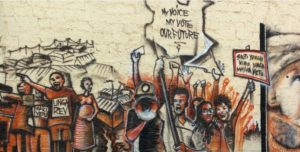
While Kenya’s status as a corrupt government has not changed much since Mwangi started his graffiti in 2014, he and his group are comfortable with making small strides. Erasing corruption in an entire government is a difficult task, but recapturing the public square is a lot more manageable and important. They have created murals in over 41 locations, some of which were illegal. But to them, these ideas are important enough to break some laws so their messages are heard and their communities regain freedom. Mwangi says that the environment his graffiti creates is a great place to foster ideas about holding officials accountable.

